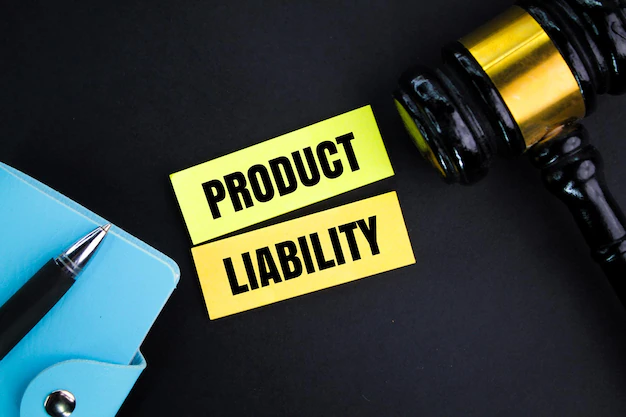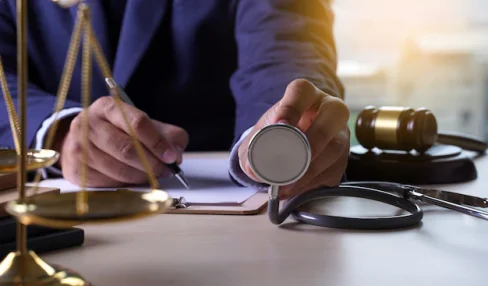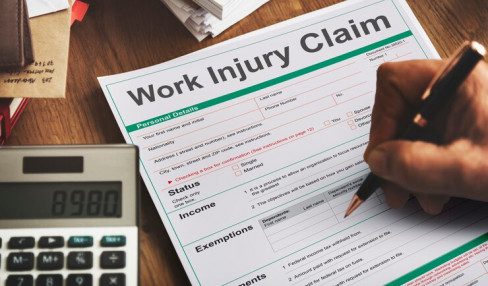Role Of Personal Injury Lawyer In The Product Liability Case
5 Mins Read
Published on: 08 September 2023
Last Updated on: 17 February 2025

toc impalement
Product liability cases can be complex, high-stakes legal battles. Having an experienced personal injury lawyer on your side is crucial for success. In this comprehensive guide, we’ll explore the indispensable role personal injury lawyers play in these cases.
The Importance Of Specialization In Product Liability Law
With product liability litigation growing steadily in recent years, specialized legal expertise is more critical than ever. According to one report, product liability cases have surged significantly amidst the COVID-19 pandemic. Why? People are more likely to sue over perceived hazards related to masks, sanitizers, cleaning products, and other goods. This makes it crucial to have experienced legal representation, such as that provided by Slaughter & Lupton Law PLLC, on your side.
For plaintiffs, a lawyer well-versed in product liability law is invaluable. These attorneys understand both the letter of the law and the strategies that give clients the best chance of prevailing. Their experience litigating similar cases also makes them adept at building strong legal arguments.
Key Legal Strategies In Product Liability Cases

Specialized product liability lawyers have several legal tools in their toolbox to build compelling cases. Two of the most common theories they utilize are strict liability and negligence.
1 – The Power Of Strict Liability
Under a strict liability theory, the defectiveness and causation of harm are the only factors that matter. The plaintiff does not need to prove the defendant was negligent in any way. As long as the product had a defect that injured the plaintiff, the manufacturing company can be held liable.
Proving negligence is not required under strict liability. Even if the company was reasonably careful in designing and manufacturing the product, it can still be responsible for any defects. This makes strict liability a very strong argument in product liability cases.
However, there are a few limits to strict liability:
- The defect must have been present when the product left the manufacturer’s possession. If damage occurred later, strict liability may not apply.
- In some states, the plaintiff must show the product was “unreasonably dangerous” for strict liability to attach. There is debate around interpreting this standard.
2 – Negligence: An Alternate Path
While strict liability is potent, a negligence theory also offers advantages. To successfully argue negligence, an attorney must establish:
- Duty of care: The company owed a duty to consumers to produce safe products. Manufacturers and distributors have a standard duty to ensure reasonable safety.
- Breach of duty: Through action or inaction, the company breached its duty of care. Lawyers must show specific negligent conduct in design, production, marketing, or other realms.
- Causation: Breach of duty caused the product defect resulting in harm. There must be a clear chain of causation.
- Injury: Actual harm or loss occurred. Physical injury, medical costs, lost wages, pain and suffering, or wrongful death may qualify.
Proving all these elements places a higher burden on the plaintiff compared to strict liability. But when causation is less clear or multiple parties share blame, negligence may be a worthwhile approach.
Skilled attorneys, either through Law Karma or from various law firms, for example, tend to construct a compelling narrative demonstrating each component of negligence.
Failure to warn and breach of warranty are other angles plaintiff lawyers often integrate into product liability cases. While strict liability and negligence are the heavy hitters, these supporting arguments help build an ironclad case from multiple fronts.
The Role Of Multiple Defendants

Naming the product manufacturer as the sole defendant is often not enough. Experienced attorneys carefully consider the entire supply and distribution chain to identify other companies that may share liability.
Some examples of additional entities that could hold responsibility:
- Component part manufacturers: If a defective component like a faulty valve caused the injury, the supplier who made it can be named as a defendant. This is especially helpful if the main manufacturer has limited financial resources or is dissolved.
- Wholesalers and distributors: Businesses who supplied the defective product may be negligent if they knew or should have known about the hazards. Proper product handling and quality checks are part of their duty of care.
- Retail stores: Retail outlets also owe customers reasonable care in stocking safe merchandise and providing warnings. Large retailers’ deep pockets also make them attractive defendants.
- Transportation companies: If improper shipping damaged the product or made it unsafe, delivery businesses may share the blame.
Settlement And Courtroom Dynamics
The vast majority of product liability suits settle out of court. However, sometimes negotiations reach an impasse and the case goes to trial.
1 – Settlement Negotiations
Preparing thoroughly for trial gives plaintiffs leverage during settlement talks. Lawyers use legal skills and negotiation tactics to secure the maximum reasonable payout.
Factors impacting settlement amounts include:
- Strength of liability evidence
- Damage severity and financial costs
- Willingness to go to trial
- Previous case outcomes
- Defendant’s financial resources
Skilled negotiators maximize compensation while avoiding an expensive, prolonged trial.
2 – In The Courtroom
If a settlement fails, an experienced trial lawyer is invaluable. They employ litigation techniques tailored to the facts of your case and arguments by the defense.
Common plaintiff strategies in product liability trials include:
- Emphasizing the physical, emotional, and financial toll of injuries
- Using visual aids and demonstrations to showcase defects
- Calling expert witnesses to explain technical issues
- Undermining defense witness credibility through cross-examination
- Highlighting inconsistencies in the defense’s narrative
Frequently Asked Questions
How Do You Prove A Product Liability Case?
The core elements you must prove are:
- A product defect existed
- The defect caused harm
- The defect was present when the product left the defendant’s control
Strict liability cases require only proving defect and causation of injury. Negligence claims also require demonstrating the company’s duty and breach of duty.
What Are The Main Types Of Defects?
The three primary categories are:
- Manufacturing: Error in production makes the individual product unsafe
- Design: The entire product line is inherently dangerous
- Marketing: Improper instructions or warnings render safe products unsafe.
What Damages Can I Recover In A Product Liability Case?
You may recover compensatory damages for medical costs, lost income, decreased earning capacity, pain and suffering, and other losses stemming from the product-related injury. Punitive damages may be awarded if negligence is egregious.
Final Thoughts
Navigating the complex world of product liability litigation is daunting. An experienced personal injury lawyer levels the playing field and fights to get you maximum compensation. Do your research to find an attorney specializing in this field—it can make all the difference.
Read Also:


















Comments Are Closed For This Article